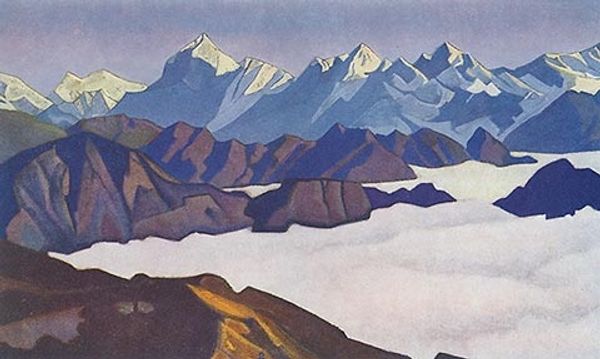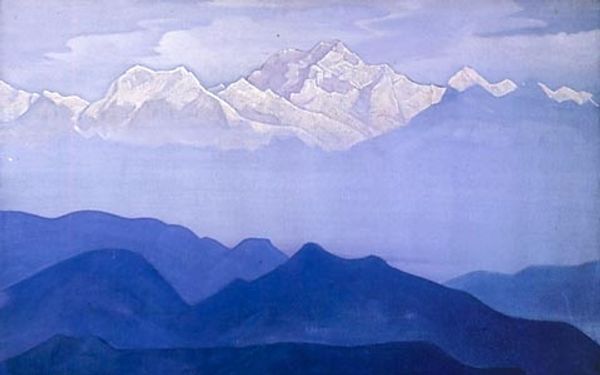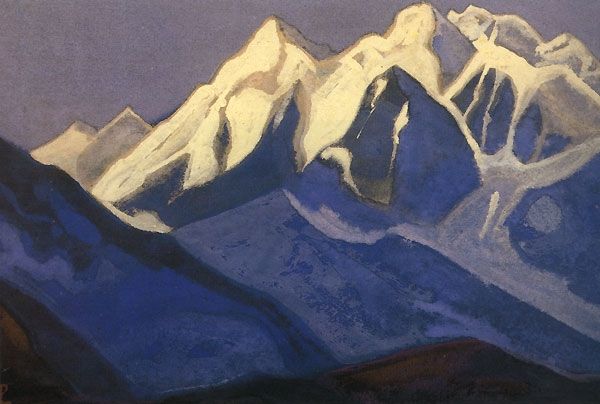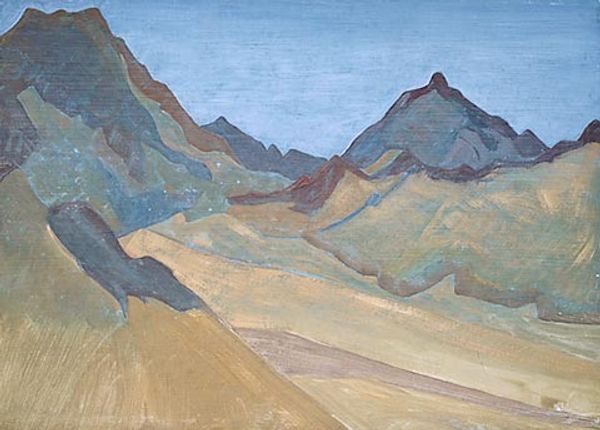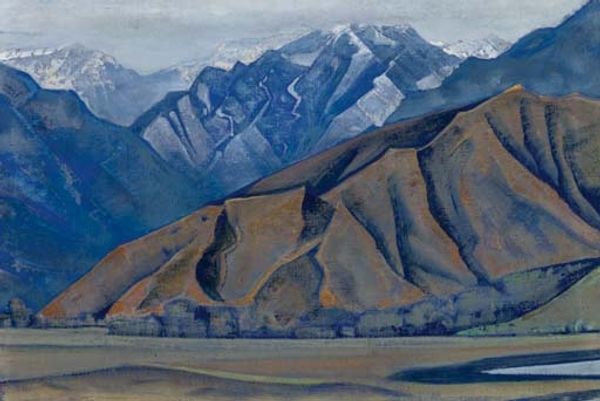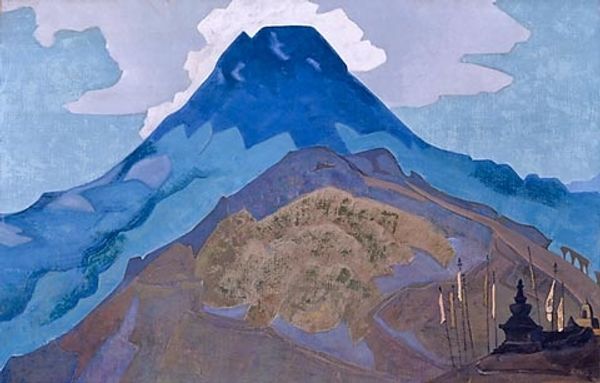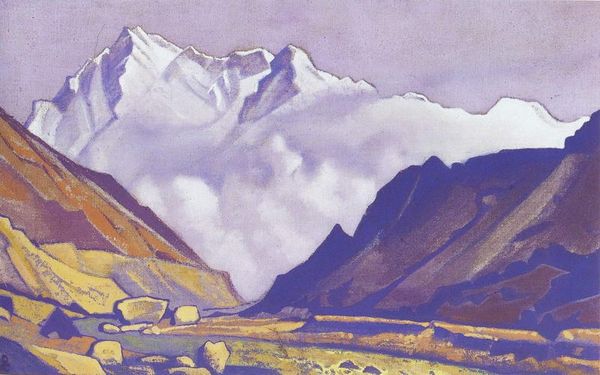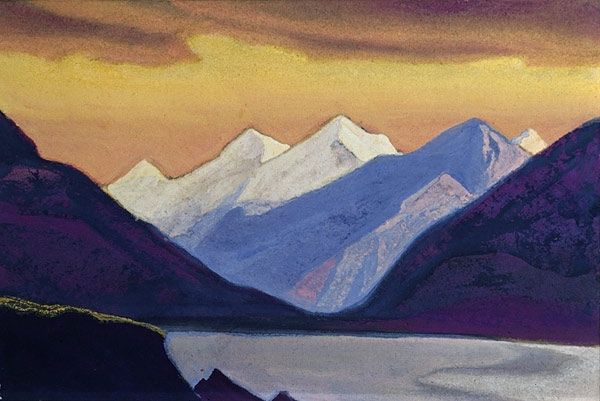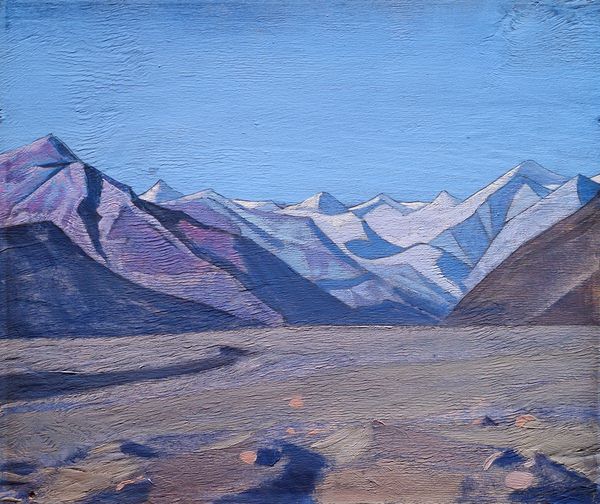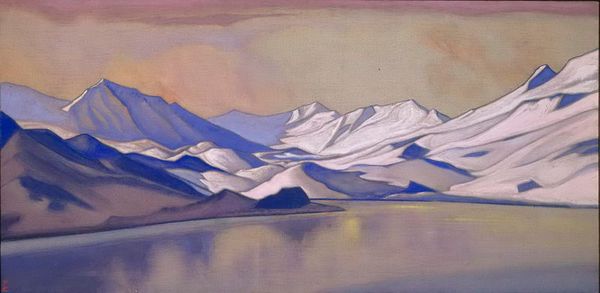
tempera, painting, oil-paint
#
tempera
#
painting
#
oil-paint
#
landscape
#
oil painting
#
mountain
#
orientalism
#
natural-landscape
Copyright: Public domain
Curator: Welcome. Before us hangs "Gilgit Road," a landscape painted in 1925 by Nicholas Roerich, utilizing tempera and oil on canvas. Editor: My goodness, what a wash of blues. It's almost monochromatic, but those stark whites of the snowy peaks punch right through. Like a cool breath on a fevered brow, wouldn’t you say? Curator: Precisely. Roerich was deeply influenced by Eastern philosophy, and this work reflects that through its stylized depiction of the Himalayas, seeking to capture the spiritual essence of the landscape. Roerich believed landscapes were reflections of inner emotional states. Editor: That's interesting, you see spirituality. I mostly just see pure, unadulterated grandeur! Look how he’s simplified the forms into these powerful, almost geometric shapes. The effect is… monumental. Did he actually travel there? Curator: He did. Roerich undertook several expeditions to Central Asia, including the Himalayas, under the patronage of cultural institutions which significantly shaped the perception and consumption of non-Western art. His paintings were used as vehicles for conveying orientalist perspectives. Editor: Hmmm, okay. But putting the politics aside for a sec—those layered mountain ranges, fading into the distance… it's so calming. You could almost step into the painting, the reflection of the water draws the eye so deeply inward, that the artist certainly created this painting in such a still moment. The journey captured makes me want to escape this place for a moment. Curator: I concur; it is precisely that invitation to reflect, Roerich hoped for. He positioned the artwork not merely as scenery but a cultural bridge, or even a meditative pathway for viewers. This, despite him not recognizing its political impact fully during this period. Editor: Well, whatever his motivations, I am captivated. Its the almost dream-like quality… Curator: It remains a potent image, provoking dialogues that straddle artistic innovation and the politics of representation. Editor: Agreed! So much to unpack here, from aesthetic allure to historical understanding. Thanks for revealing what lies beyond the visual, now I can see his intent so much more clearly! Curator: The intersection of art and society ensures every perspective enriches our experience, lets take that road again, shall we, in our mind?
Comments
No comments
Be the first to comment and join the conversation on the ultimate creative platform.
